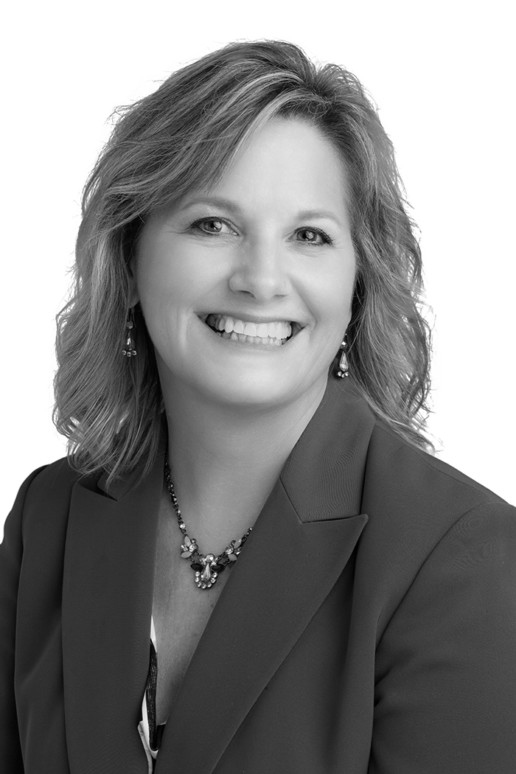2023 Inflation-Adjusted HSA Contributions
Read Time: 7 mins
HIGHLIGHTS
Background Details
On April 29, 2022, the IRS announced health savings account (HSA) contribution limits for 2023. The annual inflation-adjusted amounts demonstrate a notable spike having been increased by approximately 5.5% for 2023 over 2022 versus the 1.4% adjustment that occurred in 2022 over 2021 in response to the recent inflation surge.
The annual inflation-adjusted limit on HSA contributions for self-only coverage will be $3,850, up from $3,650 in 2022. The HSA contribution limit for family coverage will be $7,750, up from $7,300. In Revenue Procedure 2022-24, the IRS confirmed HSA contribution limits effective for calendar year 2023, along with minimum deductible and maximum out-of-pocket expenses for the HDHPs with which HSAs are paired.
HSA Contribution Limit (employer + employee)
Individual: $3,850 (Increase of $200 over 2022)
Family: $7,750 (Increase of $450 over 2022)
HSA Catch-Up Contributions (55+)
$1,000 (No change)
HDHP Minimum Deductibles
Individual: $1,500 (Increase of $100 over 2022)
Family: $3,000 (Increase of $200 over 2022)
HDHP Maximum Out-Of-Pocket (deductibles, co-pays, other amounts excluding premiums)
Individual: $7,500 (increase of $450 over 2022)
Faily: $15,000 (increase of $900 over 2022)
The new 2023 limits can be used by employers during open enrollment to encourage employees to start contributing to their accounts or to increase their current contributions. Employers not currently contributing to their employees' HSAs may want to consider the added benefit of an employer contribution to assist employees with the increased costs of care.
Employers who actively educate their employees on the benefits of HSAs and participate in contributions see increased engagement by employees and enhanced value perception of their health care benefits. Experts have shared a notable increase in employers matching employees' HSA contributions, similar to 401(k) retirement plan matches.
Caveats to Remember
- Exceeding the set contribution limits can result in an annual 6% excise penalty tax on the excess amount unless it is withdrawn from the HSA before the tax deadline for the year.
- Married couples with HSA-eligible family coverage share one family HSA contribution limit. Spouses who each have individual HSAs may contribute up to the Individual maximums in separate accounts.
- 55+ considerations:
- When both spouses are 55+, each may contribute the additional catch-up contribution as long as they have HSA accounts in separate names.
- When one spouse is 55+ and the other is <55, the 55+ spouse must have a separate account in order to contribute the additional allowed catch-up contribution.
ACA Limit Differences
Prompting some confusion for some plan administrators, there are two sets of limits on out-of-pocket expenses. The Department of Health and Human Services (HHS) issues annual out-of-pocket or cost-sharing limits for essential health benefits covered under an ACA_compliant plan (excluding grandfathered plans). The HHS limits for the 2023 annual dollar limits were issued at the end of 2021 and are higher than those set by the IRS. To qualify as an HSA-compatible HDHP, a plan must not exceed the IRS's lower out-of-pocket maximums. Take a look at the comparison:
| 2023 | |
|
HHS (ACA-compliant plans)
Max. out-of-pocket |
Individual: $9,100 (Increase of $350 over 2022)
Family: $18,200 (Increase of $800 over 2022) |
|
IRS (HSA-qualified HDHP plans)
Max out-of-pocket |
Individual: $7,500 (Increase of $450 over 2022)
Family: $15,000 (Increase of $900 over 2022) |
*The ACA's Individual out-of-pocket maximum for essential health benefits applies to each individual in a non-grandfathered group health plan, regardless of whether the individual is enrolled in individual or family coverage.
Excepted-Benefit HRA Maximum
In addition to the above increases, the IRS also raised the maximum amount employers may contribute to an excepted-benefit health reimbursement arrangement (HRA) from the 2022 amount of $1,800 to the new amount for 2023 of $1,950 (a $150 increase).
IRS Issues New HSA and HRA limits
The IRS issued Revenue Procedure 2021-25 on May 10, 2021, to announce the 2022 inflation-adjusted amounts for health savings accounts (HSAs) under Section 223 of the Internal Revenue Code (Code) and the maximum amount that may be made newly available for excepted benefit health reimbursement arrangements (HRAs).
HSA Limits
HIGHLIGHTS:
Individuals with HDHP: $3,650
Family with HDHP: $7,300
ALL THE DETAILS:
For calendar year 2022, the HSA annual limitation on deductions for an individual with self-only coverage under a high deductible health plan is $3,650. The 2022 HSA annual limitation on deductions for an individual with family coverage under a high deductible health plan is $7,300. The IRS guidance provides that for calendar year 2022, a “high deductible health plan” is defined as a health plan with an annual deductible that is not less than $1,400 for self-only coverage or $2,800 for family coverage, and the annual out-of-pocket expenses (deductibles, copayments, and other amounts, but not premiums) do not exceed $7,050 for self-only coverage or $14,100 for family coverage.
HRA Limits
HIGHLIGHTS:
Max Amount: $1,800
ALL THE DETAILS:
For plan years beginning in 2022, the maximum amount that may be made newly available for the plan year for an excepted benefit HRA is $1,800. Treasury Regulation §54.9831-1(c)(3)(viii)(B)(1) provides further explanation of the calculation.
3 alternative ways clients can use an HSA
HSAs get hailed as a boon to retirement savers, offering rare triple-tax advantage status to dollars deposited within. But these accounts, offered in tandem with high-deductible health insurance coverage, are far more versatile than they get credit for.
Typically thought of and discussed primarily as a way to help clients meet medical bills today or in their future retirement, HSAs can provide assistance beyond this narrow scope, with funds eligible for use to pay Medicare or COBRA premiums, long-term care, and non-medical expenses — all without jeopardizing that special tax treatment.
Medicare and COBRA premiums
Once clients enroll in Medicare they can no longer contribute to their HSA, but they can do something they could never do on a high-deductible plan: use the money they’ve already stashed in it to cover their premiums.
HSA funds can pay for Medicare Parts A, B and D as well as copays for Part D. Medicare HMO, Medicare Advantage, and MAPD plan premiums are also eligible expenses for reimbursement. However, HSAs cannot help with Medicare Supplement Plan or Medigap premiums, says Paul Fronstin, director of the Employee Benefit Research Institute's health research and education program.
Married couples may run into trouble when they go to reimburse themselves for such premium expenses if the account owner isn’t also the spouse who is going onto Medicare or they are not yet 65, warns Roy Ramthun, founder and president of HSA Consulting Services and a former health care policy advisor for President George W. Bush. That’s because, while HSA’s can normally be used to pay expenses incurred by the account owner’s spouse or dependent, Medicare premiums aren’t considered an eligible expense unless the account holder is 65. This means couples with any age gap need to consider whose name the HSA should be under or each open their own HSA so that the older partner doesn’t have to wait until the younger turns 65 to take advantage of this rule. (Opening two separate HSAs will also allow clients age 55 or older to make duel $1,000 catch-up contributions on top of the usual annual limits.)
Clients who reach Medicare age but opt to delay enrolling because they’re still working can also use their HSA money to pay for their employer-sponsored health care as well as continue funding an HSA. They can do this even if their spouse is on Medicare, as long as they’re on a HDHP.
And finally, clients who lost their jobs this year will likely be relieved by another HSA premium exception. If a person has health care continuation coverage, such as with COBRA, or is collecting unemployment compensation under federal or state law then they can use their HSA to pay the premiums for their health insurance, says Fronstin.
“HSA funds will frequently be used by clients to pay premiums in situations where there are little or no alternatives,” says Justin Rucci, a financial planner at Tustin, California-based Warren Street Wealth Advisors. “In a situation where a client was laid off from work, has a hefty HSA balance, and has expensive COBRA premiums, this could be a prime candidate. Alternatively, a wealthy client with a large HSA balance beyond what they would use for out of pocket medical expenses can be a good candidate for this.”
Long-term care
Like with Medicare and COBRA, HSA funds can be used to cover premiums for purchasing long-term care insurance — if it’s the right policy.
To qualify, a policy must provide coverage for only long-term care services and kick in if you need assistance with at least two daily living activities or if you suffer cognitive impairment.
“Honestly, I don’t know how many policies do not meet these requirements,” says Ramthun. “But there may be some out there and clients will want to make sure it is the right kind or else they’re going to have a bad day when they find out it isn’t.”
If your client is unsure, have them verify with their insurer that their policy is tax-qualified before considering such a move or else they could be on the hook for income tax and a penalty.
The amount a client can take from the HSA to pay the premium depends on their age. For 2019, clients 40 or younger can withdraw $420 annually to pay this expense, but those between 41 and 50 can direct almost double, $790, to their long-term care insurance policy. Those between 51 and 60 can withdraw $1,580; 61 to 70 year-olds can take out $4,220 and people 71 and older can withdraw $5,270. (The IRS has not released the limits for 2020, but they usually rise slightly each year. Ramthun expects the new figures will be out in January.)
Alternatively, clients who do purchase long-term care insurance but pay premiums out of their own pocket each year can save those receipts and then withdraw a sum equal to that annual permitted outlay at any time in the future.
Those who would prefer to go without insurance and self-fund possible long-term care costs can tap HSA assets to pay for such expenses as they occur, allowing them to better take advantage of the potential tax-free growth that comes with saving in an HSA. However, not all long-term care costs are reimbursable, warns Ramthun.
Typically long-term services that are needed to handle daily functions if you’re chronically ill or disabled count, as do those required by a plan of care prescribed by a doctor. But those who require help with more maintenance tasks like laundry or cleaning to stay in their home can’t usually use HSA funds as they aren’t considered a medical service. Nursing home costs can also be tricky for this reason as certain medical care or assistance provided at the facility may be eligible for reimbursement but other associated expenses, like room and board or meals, often are not, even at the highest level of dependent care, says Ramthun.
Non-medical expenses
While clients may have the best intentions to save their HSA funds for future medical expenses in retirement, a year like 2020 can derail such plans. If someone needs additional funds, for, say, living expenses after a job loss or an unexpected car repair, they can withdraw funds from their HSA without triggering taxes or a penalty. The catch? They must have unreimbursed past healthcare expenses.
As long as the client had an open HSA when they incurred the medical expense and hasn’t yet tapped it to cover that cost, an amount equal to that bill can be withdrawn at any time and used for any purpose they want. Clients can claim back funds for expenses dating all the way back to 2004, when HSAs were first introduced, provided they had an account. Receipts should be on hand to prove their story in case the IRS comes checking.
One thing that can trip up clients planning to use this feature is a low or empty current HSA balance. That’s because if the account balance remains at zero for 18 months, the IRS considers the HSA closed and any medical expenses you incurred before that time will no longer be reimbursable, even if you open and fund a new HSA. “
“They essentially lose that original HSA establishment date,” says Ramthun.
Financial institutions may also act before the IRS rule kicks in, closing zero balance accounts after 15 months or earlier, again negating the ability to claim back any previous medical expenses.
Clients who move off high-deductible health plans or change employers and can no longer fund an HSA are most likely to fall victim, Ramthun adds, as a withdrawal for a medical cost or fees may empty the account without them being able to do anything to rectify it.
In desperation, clients may opt to pull more from their HSA than they have in past medical bills, but this move will cost them dearly, triggering income tax and a 20% penalty on the amount unmatched to those unreimbursed health care expenses.
Turning age 65, however, lessens this pain, as withdrawals no longer need to be paired with a medical expense to avoid that 20% tax penalty. Income tax, however, will still be owed on any funds removed for non-healthcare expenses, similar to how distributions from a traditional IRA or 401(k) are treated.
SOURCE: Renzulli, K. (04 December 2020) "3 alternative ways clients can use an HSA" (Web Blog Post). Retrieved from https://www.employeebenefitadviser.com/news/3-alternative-uses-for-an-hsa-include-cobra-premiums-long-term-care-non-medical-expenses
New direct primary care rules are a tough pill for HSAs
For many Americans, direct primary care has taken control of medical costs, which has cut through many frustrating options and has created a peach of mind when it comes to both health and its costs. Read this blog post to learn more
As an employee benefits attorney and compliance consultant, last summer’s executive order on “improving price and quality transparency in American healthcare to put patients first” piqued my interest. In particular, I honed on in section 6(b), aimed at treating expenses related to direct primary care arrangements as eligible medical expenses.
As someone dealing with a complicated medical history, digging into the order and digesting the resultant proposed IRS rule was more than my job – it was and is part of my life.
Several years ago, I decided to give direct primary care a try. For about $100 a month, I gained direct access to and the undivided attention of a physician who knows me and my unique medical needs. I pay a flat, upfront fee and my doctor coordinates and manages my treatment, which isn’t always smooth sailing for someone dealing with a complex connective tissue disorder. My primary care physician serves as the coach and quarterback of my medical care, directing tests, meds, and visits to various specialists like rheumatologists or neurologists. If I have a common cold or infection, she’s readily available to prescribe treatment and set my mind at ease.
Since arriving on the scene in the 2000s, direct primary care has grown in popularity and availability. In the age of skyrocketing monthly premiums and a multitude of confusing options, more Americans are flocking to direct primary care to supplement their existing coverage. Some employers are even looking at it to drive down costs.
Now, direct primary care only covers, well, primary care, so I’ve paired it with a high-deductible healthcare plan and a health savings account to pay for my many additional medical expenses. I’m not alone: more than 21 million Americans are following the same path.
However, rather than making direct primary care more accessible, the proposed regulations actually make it virtually impossible for all of us with HSAs. Remember, by law, to qualify for an HSA, individuals must be covered by a high deductible health insurance plan. The rationale for this is consumers with more on the line are more responsible in controlling their health care costs and thus rewarded with the tax-advantaged benefits of an HSA.
Here’s the problem: the proposed regulations define direct primary care as a form of insurance – one that is not a high-deductible health plan and would therefore disqualify me from having access to an HSA.
Regulators point out that direct primary care arrangements provide various services like checkups, vaccinations, urgent care, lab tests, and diagnostics before the high deductible has been satisfied. According to the preamble to the proposed regulations, “an individual generally is not eligible to contribute to an HSA if that individual is covered by a direct primary care arrangement.”
Keep in mind, 32 states consider direct primary care a medical service rather than a health plan and exempt it from insurance regulation. Even the Department of Health and Human Services shares that view, noting in a March 12, 2012, final exchange rule that “direct primary care medical homes are not insurance.” In addition, the proposed rule itself includes some contradictory language and implications when it comes to defining direct primary care relating to other factors.
By its very nature, direct primary care is a contract between patient and physician without billing a third party. In cutting out the insurance companies, it seems obvious that direct primary care is not a competing insurance plan, but instead, a valuable service that can accompany existing coverage.
Furthermore, there is no clear justification for painting direct primary care as disqualifying medical insurance for those with HSAs. The IRS has more than enough flexibility and discretion to determine that direct primary care does not count as insurance. Regulators could do so while still treating direct primary care as a tax-deductible medical expense, which seems to be the intention of the proposed rule in the first place.
For millions of Americans, direct primary care has been a godsend in taking control of medical care, cutting through frustrating options, and gaining peace of mind when it comes to both health and healthcare costs. In short, direct primary care is everything primary care should be and was supposed to be. It’s an option that individuals should be permitted to access to complement (not compete with) high deductible health insurance plans and HSAs.
Although the comment period for the proposed regulations is now over, I am hopeful with a few tweaks and small changes they can better align with the stated purpose of the executive order, empowering patients to choose the healthcare that is best for them. If not, the new rules would likely be a hard pill to swallow for the entire direct primary care community.
SOURCE: Berman, J. (26 August 2020) "New direct primary care rules are a tough pill for HSAs" (Web Blog Post). Retrieved from https://www.employeebenefitadviser.com/opinion/new-direct-primary-care-rules-are-a-tough-pill-for-hsas
The Saxon Advisor - May 2020
Compliance Check
what you need to know
Eligible Automatic Contribution Arrangement (EACA). For failed ADP/ACP tests, corrective distributions must be made towards participants within 6 months after the plan year ends – June 30, 2020.
SF HSCO Expenditures. The last day to submit SF HSCO expenditures, if applicable*, for Q2 is July 30, 2020. *Applicable for employers with 20+ employees doing business in SF and Non-Profits with 50+ employees.
Form 5500 and Form 5558. The deadline for the 2019 plan year’s Form 5500 and Form 5558 is July 31, 2020 (unless otherwise extended by Form 5558 or automatically with an extended corporate income tax return).
Form 8955-SSA. Unless extended by Form 5558, Form 8955-SSA and the terminated vested participant statements for the plan year of 2019 are due July 31, 2020.
Form 5558. Unless there is an automatic extension due to corporate income tax returns, a single Form 5558 and 8955-SSA is due by 2½ months for the 2019 plan year.
Form 5330. For failed ADP/ACP tests regarding excise tax, Form 5330 must be filed by July 31, 2020.
401(k) Plans. For ADP/ACP testing, the recommended Interim is due August 1, 2020.
In this Issue
- Upcoming Compliance Deadlines:
- Eligible Automatic Contribution Arrangement (EACA)
- The deadline for the 2019 plan year’s Form 5500 and Form 5558 is July 31, 2020.
- Providing an HSA, FSA, or HRA Health Plan for your Employees
- Fresh Brew Featuring Lexi Kofron
- This month’s Saxon U: How To Legally Work With Gig And Contract Workers
- #CommunityStrong: Families Forward Donation Drive
How To Legally Work With Gig And Contract Workers
Join us for this interactive and educational Saxon U seminar with Pandy Pridemore, The Human Resources USA, LLC, as we discuss how to legally work with Gig and Contract Workers.
Providing an HSA, FSA, or HRA Health Plan for your Employees
Bringing the knowledge of our in-house advisors right to you...
When open enrollment hits annually, it is not uncommon for employers to feel exasperated when staring down a list of acronyms such as HSA, FSA and HRA. As it should go without saying, the most common first thought is, “What does any of this mean?” Even the most seasoned experts have difficulty with understanding the complexities of various care options.
““It is your account; yours if you leave the employer and can contribute as long as you have an HDHP and can use the funds until they are gone, even if you are no longer in an HDHP.” said Kelley Bell, a Group Health Benefits Consultant at Saxon Financial.
Fresh Brew Featuring Lexi Kofron
"Stay calm and collected on phone calls, and stay organized!"
This month’s Fresh Brew features Lexi Kofron, a Client Service Specialist at Saxon.
Lexi’s favorite brew is a Cinnamon Dolce Latte. Her favorite local spot to grab his favorite brew is at Starbucks
Scott’s favorite snack to enjoy is Pretzels and Hummus.
This Month's #CommunityStrong:
Families Forward Donation Drive
This May the Saxon family donated a bunch of household items and outdoor activities to Families Forward. Their staff goes out each week in masks and gloves to hand out these donations to the families in need through their program. Here are some pictures they provided when they passed out the donations and our trunk load of donations!
Are you prepared for retirement?
Saxon creates strategies that are built around you and your vision for the future. The key is to take the first step of reaching out to a professional and then let us guide you along the path to a confident future.
Monthly compliance alerts, educational articles and events
- courtesy of Saxon Financial Advisors.

Rising cost of healthcare is hurting HSAs
With HSA's providing a way for users to be able to reduce out-of-pocket costs for healthcare, deductibles still continue to rise. Read this blog post to learn more about why continuously raised healthcare costs are hurting current HSA's and HSA's that could be used for retirement.
Employees are increasingly putting money aside for their HSAs, but they’re using almost the entirety of it to cover basic health needs every year instead of saving the money for future expenses, according to Lively’s 2019 HSA Spend Report.
“People are putting money in and taking money out on a very regular basis, as opposed to trying to create some sort of nest egg for down the road,” says Alex Cyriac, CEO and Co-Founder of Lively.
The San Francisco-based HSA provider says 96% of annual contributions were spent on expected expenses and routine visits as opposed to unexpected health events and retirement care. In 2019, the average HSA account holder spent their savings on doctor visits and services (50%), prescription drug costs (10%), dental care (16%), and vision and eyewear (5%).
The rising cost of healthcare is a factor in these savings trends: Americans spent $11,172 per person on healthcare in 2018, including the rising cost of health insurance, which increased 13.2%, according to National Health Expenditure Accounts. For retirees, the figures are shocking: a healthy 65-year-old couple retiring in 2019 is projected to spend $369,000 in today’s dollars on healthcare over their lifetime, according to consulting firm Milliman.
“Because people can't even afford to save, there's going to be a very low likelihood that most Americans are going to be able to afford their healthcare costs in retirement,” says Shobin Uralil, COO and Co-Founder of Lively.
HSAs were intended to be a way for consumers to save and spend for medical expenses tax-free. Additionally, its biggest benefit comes from being able to use funds saved in an HSA in retirement — when earnings are lowest and healthcare is most expensive. However, just 4% of HSA users had invested assets, according to the Employee Benefit Research Institute.
While HSAs have surged in popularity as a way for more Americans to reduce overall out-of-pocket healthcare spending, more education is required to help account holders understand the benefits of saving and investing their annual contributions for the long-term, the Lively report states.
“As deductibles continue to rise, people just don't seem to have an alternative source for being able to fund those expenses, so they are continuing to dip into their HSA.” Cyriac says. “I think this is just reflective of the broader market trend of healthcare costs continuing to rise, and more and more of those costs being disproportionately passed down to the user.”
SOURCE: Nedlund, E. (29 January 2020) "Rising cost of healthcare is hurting HSAs" (Web Blog Post). Retrieved from https://www.employeebenefitadviser.com/news/rising-cost-of-healthcare-is-hurting-hsas
Providing an HSA, FSA, or HRA Health Plan for your Employees
When open enrollment hits annually, it is not uncommon for employers to feel exasperated when staring down a list of acronyms such as HSA, FSA and HRA. As it should go without saying, the most common first thought is, “What does any of this mean?” Even the most seasoned experts have difficulty with understanding the complexities of various care options. That’s why in this installment of CenterStage, Kelley Bell, a Group Health Benefits Consultant at Saxon Financial, is here to break down the ‘alphabet soup’ that is HSAs, FSAs and HRAs.

What Is an HSA?
An HSA stands for a Health Savings Account. Kelley stated that HSAs work in conjunction with your existing HDHP plan (given you already have one) to cover costs associated with eligible medical, dental and vision expenses. Available to open just like a bank savings account, Kelley said, “It is your account; yours if you leave the employer and can contribute as long as you have an HDHP and can use the funds until they are gone, even if you are no longer in an HDHP.” For most, this applies to retirement. If you are reasonably healthy throughout your working life, Kelley said you can carry a large HSA balance into retirement. At that point, the funds can be used to cover the out-of-pocket medical costs that often increase with you as you age.
In addition to all the above, certain tax advantages exist within an HSA plan:
- Contributions are excluded from federal income tax.
- Interest earned is tax referable.
- Withdrawals for eligible expenses are exempt from federal income tax.
HSAs are typically available through employers, but individuals can establish one, as well. Many banks offer HSA programs for their customers, meaning if your employer does not offer the benefit, you can create an HSA account there.
What Is an FSA?
An FSA is a Flexible Savings Account. Much like an HSA, these plans cover the payment of medical, dental and vision-related expenses, and contributions you make to the plan are tax-deductible. Similarly, when you open an FSA account, you’re typically provided with a debit card or checkbook, so the funds can be accessed in the account. However, Kelley stated an FSA plan has a catch: “An FSA cannot roll over unused funds from year to year and is not portable.” Therefore, any contributions made to the plan that have not been spent by the end of the year are forfeited.
Some employers, as Kelley noted, do have options that will help you avoid complete forfeiture of unused funds. Certain employers allow their employees to carry over up to $500 of unused funds into the following year, while others will extend the use of the funds for up to two and a half months into the new year. Employers generally will offer one or the other, but never both. Some, however, offer no such option at all.
Kelley mentioned general purpose FSA coverage, and stated it can “make you ineligible for HSA contributions.” She continued to add that certain types will not prevent HSA eligibility, i.e. limited FSA for vision, dental, parking or “post-deductible FSA” which reimburses you for preventative care or for medical expenses that are incurred “after the minimum annual HDHP deductible has been met.” As a result of forfeiting any unused funds in the account, an FSA is best used by someone who has ongoing and predictable medical expenses. In this situation, it is likely you will deplete the funds in the account, whereas if you are considered healthy and have limited medical expenses (i.e. minor illness, sinus infection), the potential for forfeiture is high, and you may have to forgo the account. FSAs are employer-sponsored and typically are an option as part of a ‘cafeteria plan’.
What Is an HRA?
An HRA is a Health Reimbursement Arrangement. Like the other plans described in this article, an HRA is a tax-free employer funded amount of money for healthcare expenses. Contributions, as Kelley explained, “can be excluded from gross income, meaning that won’t pay taxes on that money and reimbursements from the HRA are tax-free when used for qualified medical expenses.” Depending upon the type of HRA, unused funds may or may not be rolled over from one year to the next. However, employers may also allow employees to use their HRA funds even into their retirement.
The benefits of an HRA take action after the employee has met a specific portion (i.e. employee meets 1st $2500 of a $5000 deductible), making it easier for the employee to meet their high deductible. HRAs are good for employers who want more control over how their medical dollars are put to use. Naturally, if the employer is paying the cost of the HRA, it can be of an increased advantage than contributory health insurance premiums and direct payment for out-of-pocket expenses. With an HRA, the employer determines the reimbursements and does not have to contribute the same amount for all employee groups (i.e. tiers of employee coverage, employee/child, employee/spouse and family).
How Saxon Helps
It is important to understand the needs of every client and educate their employees on how to use their healthcare. Saxon values client education and service above all else. We make educating employees a priority and ensure their benefits are understood and easy to use. Saxon represents all of the major carriers, allowing us to secure the best plans and rates for you and your staff, which we review annually.
If you are considering offering an HSA, FSA or HRA insurance plan to your employees, contact Kelley Bell today at (937) 672-1547 or kbell@gosaxon.com to begin exploring the benefits of adding this superior level of coverage today.
10 Retirement Lessons for 2019
There are lessons to be learned from recent decisions and settlements about the best ways to protect yourself in 2019. Here are some important takeaways from recent litigation activity.
1. Your Process Matters.
New York University recently got a lawsuit dismissed by a district court because it provided evidence that it followed a prudent process when selecting investments. If a case goes to trial, you will also need to demonstrate that you made prudent decisions in order to prevail.
2. Put It in Writing.
It’s hard to prove that you followed a prudent process if you don’t write down what you did. People change jobs, die or simply forget the details of what was done if there are not minutes explaining the reasons for decisions. Have clear written policies showing what you will consider when selecting or replacing investments and reviewing fees, and make sure to follow those policies.
3. Know and Review Your Options.
Complaints have alleged that fiduciaries failed to consider alternatives to common investments, such as collective trusts as an alternative to mutual funds and stable value funds as alternatives to money market funds. Employees of investment giants such as Fidelity have sued because they claimed that these companies filled their plans with their own in-house investments even though better performing alternatives with lower fees were available. Even if you don’t select these options, you should investigate them and record the reasons for your decisions. Be especially careful about choosing your vendor’s proprietary funds without investigation.
4. Understand Target Date Funds.
They have different risk profiles, performance history, fees and glide paths. Don’t take the easy way out and automatically choose your vendor’s funds. In fact, you need to have a prudent process to select these.
5. Benchmark Plan Fees.
Be able to demonstrate that your fees are reasonable for plans of your size. But don’t compare apples to oranges. Select an appropriate peer group. Remember, though, that it is not a violation of ERISA to pay higher fees for better service, so long as the fees are reasonable.
6. Retain an Expert to Help You.
Don’t be penny wise and pound foolish. If you don’t have internal investment expertise, hire an outside fiduciary to assist you. Insist on written reports of recommendations if the fiduciary is a co-adviser, and that the fiduciary attend committee meetings to answer questions and explain the recommendations.
7. Consult Outside Counsel When Necessary.
See No. 6. Don’t try to guess what the law requires, and listen to counsel’s recommendations about best practices. While both advisers and ERISA counsel are available to provide fiduciary education, your ERISA counsel can give you a better handle on your legal responsibilities as ERISA fiduciaries.
8. Hold Regular Committee Meetings.
The days when committees met once a year are over. Many committees now meet quarterly. These should be formal meetings where committee members sit down together with the plan adviser and, where appropriate, with ERISA counsel.
A secretary should take formal minutes. Plan fiduciaries shouldn’t be meeting over the water cooler or making decisions by exchanging emails without face-to-face discussion in a misguided effort to save time.
9. Review Your Providers.
At least once a year, review whether your vendors are performing in accordance with their proposals and their services agreements, and survey your committee members to determine whether they are happy with the provider’s performance. Follow up to request changes or start an RFP to find a new vendor if necessary.
10. Schedule Regular RFPs.
Even if you are happy with your current providers, new RFPs will give you the opportunity to renegotiate your services agreements and fees and will also let you know whether additional services are available in the marketplace.
content resource: https://401kspecialistmag.com
5 critical conversations to have before retiring
Saxon Blog,Employee Communication,Employee Benefits,Retirement,benefits,employees
September 17, 2018
According to the Society of Actuaries' Retirement Section and Committee on Post Retirement Needs and Risks, about 70 percent of Americans are on course to maintain their standard of living in retirement. Are your employees ready for retirement? Continue reading to learn more.
0 Comments8 Minutes
IRS bumps up 401(k) contribution limit for 2019
Employee Communication,Saxon Blog,Employee Benefits,IRS,Retirement,Helpful Tips,benefits
November 14, 2018
Do you offer a retirement plan to your employees? The IRS recently raised the annual contribution cap for 401(k) and other retirement plans. Continue reading to find out what the new contribution caps are.
0 Comments3 Minutes
From HSA to 401(k) contribution limits, 11 numbers to know for 2019
Do you offer HSAs, FSAs or 401(k)s to your employees? There are many important numbers companies and employees need to know regarding HSAs, FSAs and 401(k)s. Read this blog post to learn more.
There are a slew of important figures companies and employees need to know regarding health savings accounts, 401(k)s and flexible spending accounts. While the IRS announced HSA changes in May, the agency only recently announced annual changes to FSAs and 401(k)s. From contribution limits to out-of-pocket amounts, here are the figures employers need to know — all of which take effect in January.
$19,000: 401(k) pre-tax contribution limits
$6,000: 401(k) catch-up contribution limit
$6,000: IRA contribution limits
$3,500: Annual HSA contribution limit for individuals
$7,000: HSA contribution limit for family coverage
$1,350: HDHP minimum deductible for individual
$2,700: HDHP minimum deductible for family
$6,750: HDHP maximum out-of-pocket amounts (individual)
$13,500: HDHP maximum out-of-pocket amounts (family)
$1,000: HSA catch-up contributions
$2,700: FSA contribution limit
SOURCE: Mayer, K. (6 December 2018) "From HSA to 401(k) contribution limits, 11 numbers to know for 2019" (Web Blog Post). Retrieved from https://www.benefitnews.com/list/from-hsa-to-401-k-contribution-limits-11-numbers-to-know-for-2019
End-of-year FSA expenses: An employer cheat sheet
Do your employees still have unspent funds in their flexible spending accounts (FSA)? Often, reminding employees what expenses their FSA funds can help mitigate this issue. Read this blog post to learn more.
The scenario is all too familiar for employers and human resource managers: The year ends, and employees still have unspent funds in their flexible spending accounts. Whether employees forget that the money in their FSAs must be used or it will be lost, or they simply aren’t aware of which expenses can be covered by FSA funds, their frustration at losing money often falls on the employer.
Reminding employees which expenses are eligible to be covered by an FSA can help mitigate headaches for employers and HR departments in the new year and shed light on lesser-known options for making the best use of remaining funds before the end of the plan year.
As a general rule, an eligible expense is any medical expense the health plan doesn’t cover. This includes things such as out-of-pocket costs, co-pays, co-insurance, hospital visits and prescription drugs. Employees also can apply their FSA funds to dental and vision expenses, which often are not covered in health insurance plans.
Some eligible expenses employees might not be aware of include flu shots, prescription sunglasses, sunscreen that is 30 SPF or higher, grooming for service dogs, acupuncture, arch supports and nutritional consultations. Employees can also use money from FSAs to cover pregnancy tests and prenatal vitamins, hearing aids, canes and wheelchairs. They can also use funds to cover personal trainer fees, as long as a letter of medical necessity accompanies the claim.
The IRS determines which expenses qualify for FSAs and maintains a list on its website. Most FSA administrators have lists on their websites as well. FSA-holders can either search for individual expenses or scroll through the list to see what opportunities they might be missing. But it’s a good idea for employers to provide those lists for employees.
In addition to reminding employees what types of expenses are eligible for coverage by FSA funds, employers should review if their plan has a grace period, runout or rollover. If so, employers should communicate the details with employees, as this can help them take full advantage of the time they have to incur expenses and submit receipts for reimbursement.
A grace period is the amount of time an FSA-holder has after the end of the plan year to spend unused funds or incur expenses. A typical grace period is up to 2.5 months after the plan year ends. A run out is the amount of time an FSA-holder has after the end of the plan year to submit claims for reimbursement. In this case, expenses must be incurred before the end of the plan year. An FSA rollover allows up to $500 to be carried over from one calendar year to the next.
Employees also might not be aware that they can use FSA funds on a medical dependent, whether that dependent is covered by the FSA holder's health plan or not. For instance, if an employee has a 24-year-old daughter not covered by the employer health plan who needs a co-pay for a doctor appointment covered, the employee can use their FSA.
Lastly, it’s also important to make it clear to employees the distinction between an FSA and a health savings account. While many of the same expenses are eligible for coverage by either an FSA or HSA, make sure to remind employees about a few key distinctions. An HSA is not “use it or lose it.” All funds roll into the new year and do not need to be used up before the end of the plan year. And for an employee to use his or her HSA to cover a dependent’s medical expenses, the dependent must be a tax dependent.
Helping employees make the best use of their FSA funds before the end of the year not only positions the employer as a hero for saving employees’ hard-earned money, but it inevitably saves the employer from a headache heading into 2019.
SOURCE: Peterson, M. (19 November 2018) "End-of-year FSA expenses: An employer cheat sheet" (Web Blog Post). Retrieved from https://www.benefitnews.com/opinion/end-of-year-fsa-expenses-an-employer-cheat-sheet?brief=00000152-14a5-d1cc-a5fa-7cff48fe0001













